Sparks, NV Pollen and Allergy Report for Summer 2023
Pollen Allergy Trends in Sparks, NV
When is pollen lowest in Sparks, NV?

February
Lowest month total PPM
Avg. PPM
When is pollen highest in Sparks, NV?

March
Highest month total PPM
Avg. PPM
How does pollen in Sparks, NV compare to Nevada?
Sparks has a higher average PPM than the state of Nevada.
Sparks yearly avg PPM:
Nevada yearly avg PPM:
How does pollen in Sparks, NV compare to the USA?
Sparks has a lower average PPM than the USA.
Sparks yearly avg PPM:
USA yearly avg PPM:
Is pollen worse this year in Sparks, NV?
Spring 2023 was about the same as 2022.
Spring 2023 PPM:
Spring 2022 PPM:
Average PPM in Sparks, NV
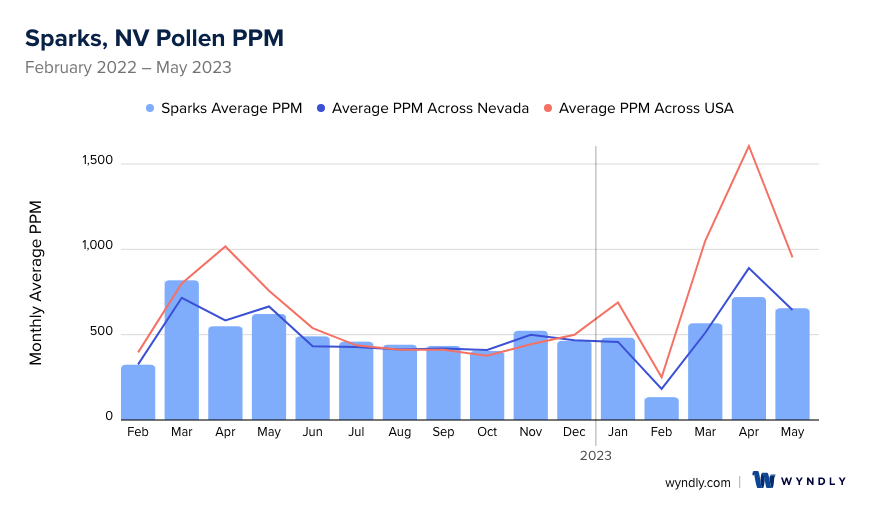
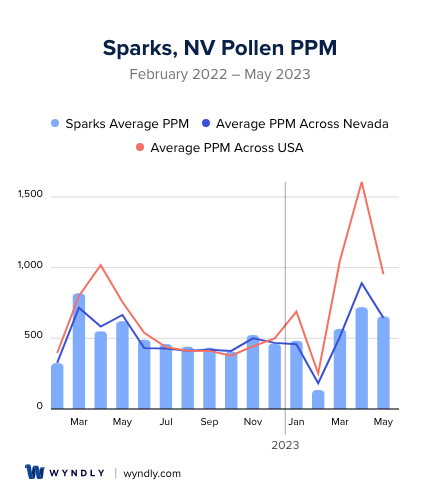
Sparks, NV Pollen and Allergy Breakdown by Month
Grass
When is grass pollen highest in Sparks, NV?
May has the highest grass pollen in Sparks, NV with an average PPM of
When is grass pollen lowest in Sparks, NV?
December has the lowest grass pollen in Sparks, NV with an average PPM of
Tree
When is tree pollen highest in Sparks, NV?
March has the highest tree pollen in Sparks, NV with an average PPM of
When is tree pollen lowest in Sparks, NV?
August has the lowest tree pollen in Sparks, NV with an average PPM of
Weed
When is weed pollen highest in Sparks, NV?
November has the highest weed pollen in Sparks, NV with an average PPM of
When is weed pollen lowest in Sparks, NV?
February has the lowest weed pollen in Sparks, NV with an average PPM of
Sparks, NV Pollen Monthly Breakdown by Pollen Type
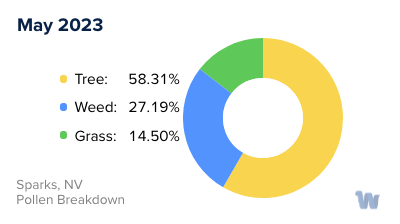
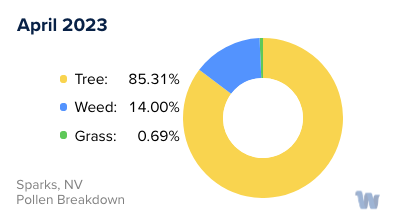
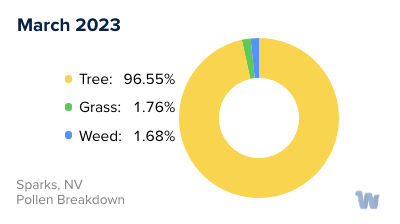

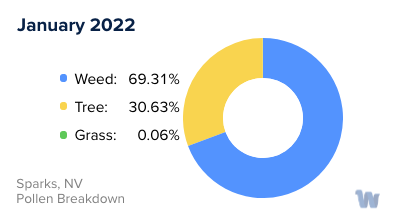
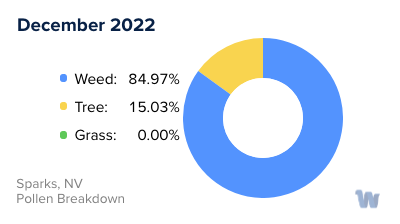
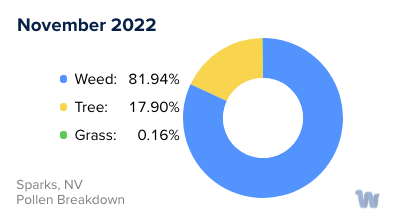
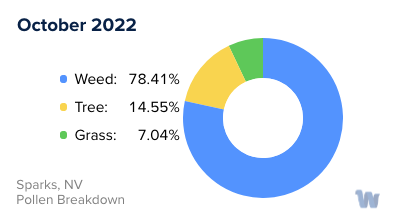
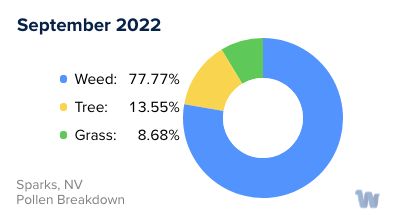
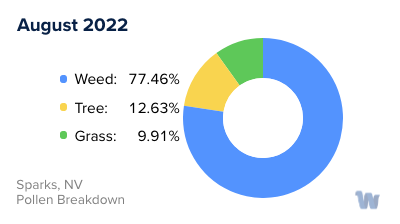
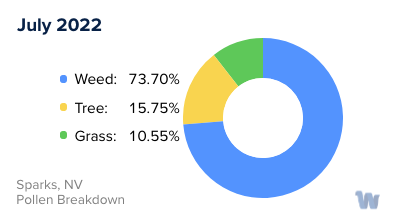
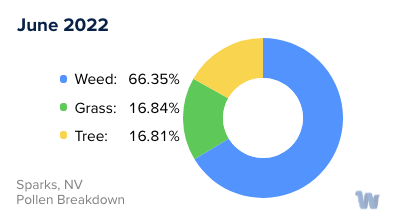
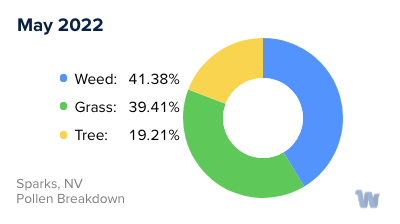
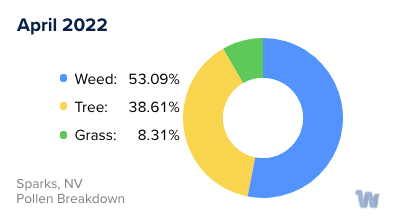
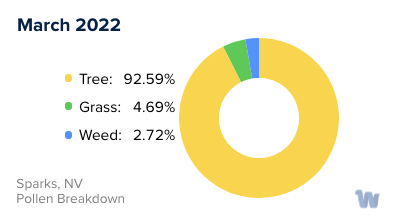
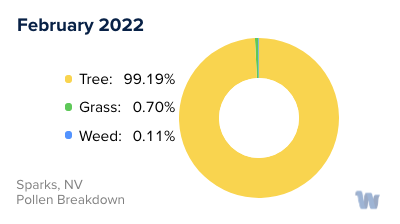
Pollen and Hay Fever in Sparks, NV
In the city of Sparks, Nevada, people often encounter pollen allergies, also known as allergic rhinitis or hay fever. These allergies can occur seasonally or year-round, but they're most common during transitional seasons like spring when pollen is most present. More than one-quarter of all adults are affected by seasonal allergies, with women more likely to experience them than men.
The types of pollen that Sparks residents may encounter vary and can come from different sources such as trees, grass, and weeds. Specifically, the types of tree pollen found in this region include Pine, Juniper, and Oak.
The tree pollen season generally begins in early spring, followed by the grass pollen season in late spring and early summer. Finally, weed pollen, which can also cause allergic reactions, typically peaks in late summer and fall. It's important to note that the exact timing and severity of these pollen seasons can vary year by year, influenced by factors such as weather conditions and temperature variations.
Symptoms of pollen allergies typically include itchy, watery eyes, a runny or stuffy nose, sneezing, and congestion. These symptoms can significantly affect the quality of life for those affected, particularly during peak pollen seasons.
While it's not always possible to completely avoid exposure to pollen, being aware of the types of pollen present in your local area and their typical seasons can help you better understand when you might be at risk for experiencing allergy symptoms. This awareness can help individuals with allergies prepare for and manage their symptoms more effectively.


